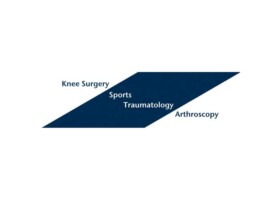
Authors:
Peter J Millett, Jean-Yves Schoenahl, Bradley Register, Trevor R Gaskill, Derek F P van Deurzen, Frank Martetschläger
Abstract:
Posterior dislocation of the shoulder is uncommon and represents less than 5 % of all shoulder dislocations [10]. Frequent etiologies include trauma, congenital hyperlaxity, or epileptic seizures. In most cases, only soft tissue damage of the posterior capsulolabral complex occurs. Though less common, posterior glenoid bone loss can occur if the injury is of sufficient magnitude or if recurrent dislocation occurs. Though bone loss greater than 20–25 % of the anterior glenoid is often considered an indication for reconstruction, the magnitude of posterior glenoid bone loss necessary to result in posterior shoulder stability is less clear. Posterior glenoid reconstructive options are limited compared to those available for anterior glenoid bone loss. Specifically, a surrogate for coracoid transfer that accomplishes both bony reconstruction and dynamic stability is not available for the management of posterior glenoid deficiency. Therefore, reconstructive techniques have focused on extra-articular structural bone transfer that obstructs humeral translation and thereby prevents glenohumeral dislocation. These salvage techniques provide satisfactory early outcomes, but more recent literature suggests long-term results are not as promising. Considering these results, a technique capable of restoring both glenoid bone stock and congruent articular cartilage may be beneficial.
Therefore, we describe the use of a distal tibia osteoarticular allograft for treatment of posterior shoulder instability with large posterior glenoid bone defect. The use of fresh distal tibia allograft has previously been described as an anatomic reconstructive option for anterior glenoid bone loss. Its use for posterior glenoid reconstruction has not been described yet. Therefore, this technique provides a new treatment option for patients with recurrent posterior instability accompanied by substantial posterior glenoid bone loss.
For the complete study: Reconstruction of posterior glenoid deficiency using distal tibial osteoarticular allograft
